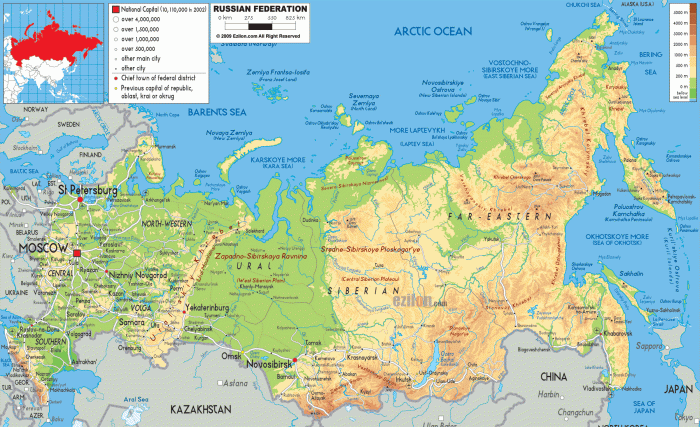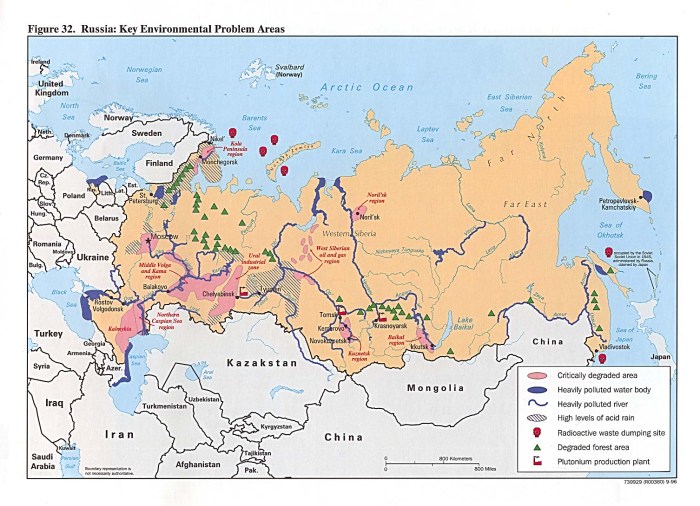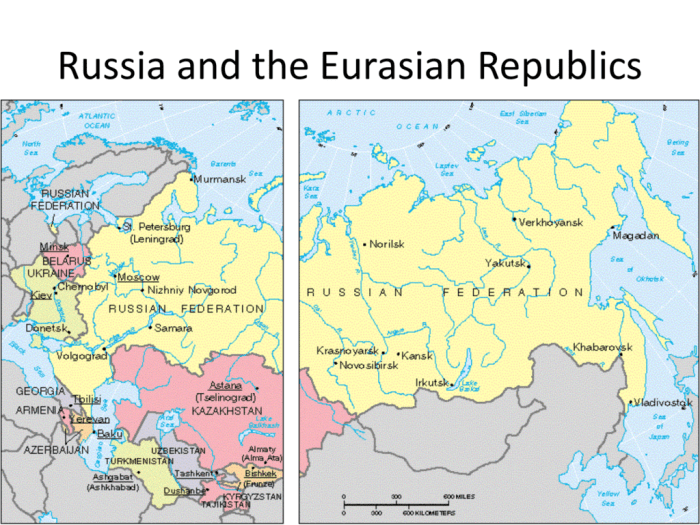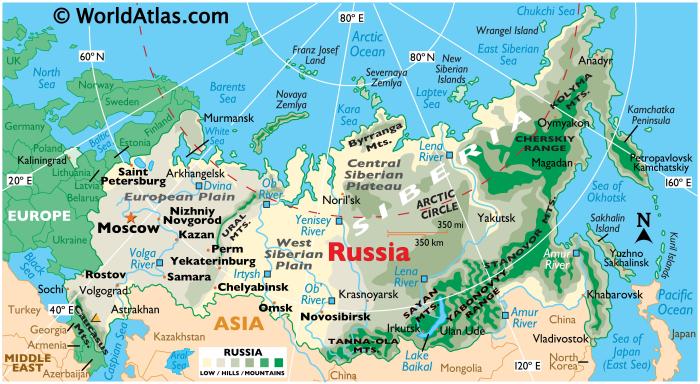The Russia and Eurasian Republics Physical Map offers a comprehensive overview of the region’s diverse geographic features. Spanning vast territories, this map highlights the political boundaries, major mountains, rivers, lakes, and deserts that shape the landscape. Embark on a journey to explore the physical characteristics and geographic regions that define this dynamic part of the world.
From the towering peaks of the Ural Mountains to the sprawling Siberian taiga, the map showcases the region’s unique ecosystems and natural resources. Each republic’s distinct political boundaries are clearly delineated, providing a clear understanding of the region’s geopolitical landscape.
Physical Map of Russia and Eurasian Republics

Russia and the Eurasian republics encompass a vast and diverse physical landscape. The region is home to towering mountain ranges, sprawling deserts, vast forests, and numerous rivers and lakes.
The following table provides a detailed physical map of Russia and the Eurasian republics, highlighting major geographic features:
| Region | Major Geographic Features |
|---|---|
| Russia | – Ural Mountains
|
| Kazakhstan | – Caspian Sea
|
| Kyrgyzstan | – Tien Shan Mountains
|
| Tajikistan | – Pamir Mountains
|
| Turkmenistan | – Karakum Desert
|
| Uzbekistan | – Kyzylkum Desert
|
Geographic Regions of Russia and Eurasian Republics

The region of Russia and the Eurasian republics can be divided into several distinct geographic regions, each with its own unique physical characteristics, climate, and vegetation.
European Russia
- Rolling hills and plains
- Temperate climate
- Deciduous forests
Siberia
- Vast taiga forests
- Subarctic climate
- Permafrost
Central Asia
- Arid deserts and steppes
- Continental climate
- Sparse vegetation
Caucasus
- Mountainous region
- Temperate and subtropical climate
- Diverse vegetation
Economic Resources of Russia and Eurasian Republics: Russia And Eurasian Republics Physical Map
Russia and the Eurasian republics possess a wealth of natural resources that contribute significantly to their economies.
Oil and Gas
- Major reserves in Russia, Kazakhstan, and Turkmenistan
- Significant economic importance for energy production and export
Minerals
- Abundant reserves of copper, gold, silver, and other metals
- Important for industrial development and export
Timber
- Vast forests in Russia and Siberia
- Valuable for construction, paper production, and other industries
Environmental Challenges in Russia and Eurasian Republics

Russia and the Eurasian republics face a number of environmental challenges that impact their ecosystems and populations.
Climate Change, Russia and eurasian republics physical map
- Rising temperatures and altered precipitation patterns
- Melting permafrost, sea level rise, and extreme weather events
Pollution
- Industrial pollution from mining and energy production
- Air and water pollution from urban areas and agriculture
Deforestation
- Loss of forests due to logging, agriculture, and wildfires
- Habitat destruction and loss of biodiversity
Political and Economic Cooperation in the Region

Russia and the Eurasian republics have established various organizations to promote political and economic cooperation in the region.
Eurasian Economic Union
- Established in 2015
- Members include Russia, Kazakhstan, Kyrgyzstan, Belarus, and Armenia
- Aims to promote economic integration and free trade
Shanghai Cooperation Organization
- Founded in 2001
- Members include Russia, China, Kazakhstan, Kyrgyzstan, Tajikistan, Uzbekistan, India, and Pakistan
- Focuses on security cooperation and economic development
Key Questions Answered
What is the largest mountain range in the Russia and Eurasian Republics region?
Ural Mountains
What is the largest lake in the Russia and Eurasian Republics region?
Caspian Sea
What is the longest river in the Russia and Eurasian Republics region?
Ob River